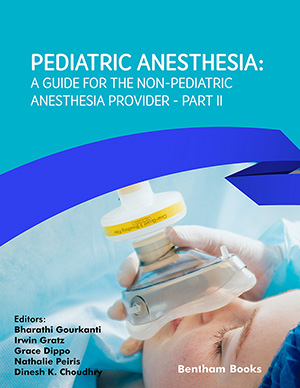Abstract
Children undergoing anesthesia have many considerations of disease
processes that require careful attention to details and addressing specific needs. There
are several comorbidities that are frequently encountered in a pediatric setting. A
common scenario is a child with an upper respiratory tract infection presenting for
elective surgery. We will discuss the criteria to be considered regarding when it is safe
to proceed with elective surgery and when the risk is high. Asthma is common among
children, and exacerbation can occur during an anesthetic. Anesthetic management of
children with these respiratory illnesses is discussed. Children with Down syndrome
frequently present for various cardiac and non-cardiac surgical interventions.
Anesthetic issues relating to their non-cardiac surgeries will be discussed. Children
with sickle cell disease is yet another group of patients frequently admitted to the
hospital with sickle cell crisis. They warrant attention to specific details to ensure
getting through surgery safely and require optimal pain management. Obstructive sleep
apnea is increasingly encountered in children presenting for surgical procedures.
Anesthetic challenges and risks they pose will be discussed.
Keywords: Acute chest syndrome, Apnea-hypopnea index, Asthma, Bronchospasm, Central sleep apnea, Cervical spine instability, Deep extubation, Down syndrome, Hemoglobin F, Laryngeal mask airway, Laryngospasm, Obstructive sleep apnea, Perioperative respiratory adverse events, Red blood cell transfusion, Short-acting beta2 agonist, Sickle cell disease, Sleep-disordered breathing, Upper respiratory tract infection, Vaso-occlusive crisis, Wheezing.

